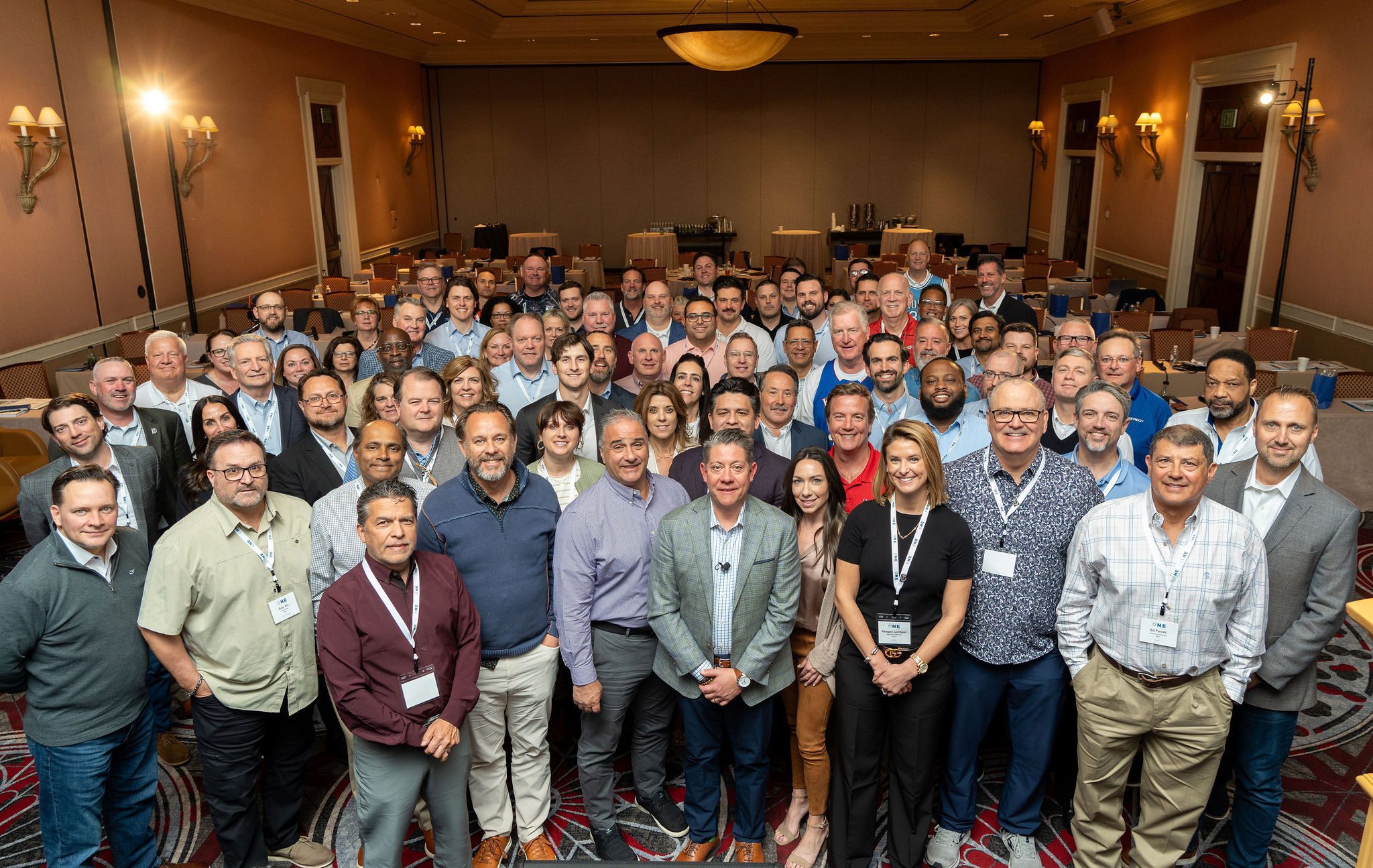If you’re new to the world of energy production and usage, some of the scientific and engineering terminologies can feel a little intimidating. Knowing the basics will help you navigate opportunities for improving your energy efficiency, and guide your decision making. Our experts at Veregy have set out to answer your questions and define common energy terminology.
How does Solar Power Work? What does Photovoltaic Mean?
Solar photovoltaic (PV) cells are the most common means of harnessing the power of the sun to generate energy. When light hits a solar panel, the energy from the sunlight is absorbed and converted into usable electricity.
Photo + Voltaic = light + electrical potential. Literally, “electricity from light.” The photoelectric effect, the underlying basis for photovoltaic power generation, was discovered by Albert Einstein in 1905, paving the way for the development of modern solar power.
A solar cell is the basic device that converts solar energy into electricity. Most solar installations are made up of dozens or hundreds of interconnected solar cells with multiple cells making up a solar module. Solar modules generate Direct Current (DC) electricity, but unfortunately, the utility grid and most energy applications require Alternating Current (AC), This is why all grid-connected solar power systems require an inverter to convert DC to AC.
Only a certain amount of the power coming from sunlight can be converted into usable energy by a photovoltaic cell. This ratio, called conversion efficiency is usually given as a percentage and describes the efficiency of a solar panel in turning sunlight into energy. The more efficient a solar system is, them more energy it will produce from the same amount of sunlight. If available space for a solar power system is limited, more efficient panels may be the solution as they are able to generate more electricity in a smaller area.
Insolation is a term that describes how much sunlight a particular area receives, and thereby how productive solar panels may be in that area. Insolation is usually expressed as the intensity of light energy per unit of land area and varies widely by region. Areas with higher insolation will have faster payback for solar PV systems as there is more solar energy available to convert into electricity. The Southwest of the United States, for instance, has higher insolation than the Pacific Northwest and stands to have a more productive solar capacity because of this.
Renewable Energy Certificates (or RECs) are tradeable energy commodities that represent proof of energy generation from a renewable source. When a megawatt hour of renewable energy is generated and contributed to the grid, a REC is simultaneously created. This REC can then be used to comply with regulations requiring verification of renewable energy production or traded to another entity for the same use. RECs are verified by an independent party and are “retired” once they have been utilized as proof of carbon-neutral energy. Keep in mind, not all markets have REC programs in place.
What is the Difference Between Energy Payback and Simple Payback?
Energy Payback is how long it takes for a solar panel to generate an amount of energy equivalent to the energy that went into manufacturing it. A modern solar panel will last 30+ years, with an energy payback in the 1-3 year range, depending on the insolation and conditions of where it was installed. This means a solar panel can ultimately produce 10-30 times more energy than was used to produce it.
Simple Payback tells you how long it will take for cost savings in energy production to balance out the initial investment of the solar PV system. If an initial investment of $5,000 was made, and the panels are offsetting $1,000 annually in energy costs, the simple payback period is 5 years.
What Does it Mean to be Grid-Connected? What is Net Metering
A solar electric system that feeds excess solar energy back into the wider utility grid is considered grid connected. An “off-grid” system, on the other hand, is entirely self-contained and neither draws nor feeds energy to the utility grid. Being grid connected is often a requirement for certain incentives and rebates and allows for Net Metering if your state offers it.
If a grid-connected solar electric system generates more energy than is used, the excess energy is fed back into the utility grid. While not all states and utilities mandate net-metering, for those that do, most offer full or partial credit for the energy you contribute to the grid from your utility company. This means that energy drawn from the grid when a system is not producing sufficiently, for example at night, is offset by the excess electricity produced during the day. Net-metering can also help balance seasonal differences in solar energy production if the utility company allows energy credits to roll over month to month.
What is Commissioning? What are the Different Types of Commissioning?
Commissioning (abbreviated Cx) is a quality-assurance process for achieving, verifying, and documenting that the performance of facilities, systems, and assemblies meet the project stakeholders’ documented objectives and criteria. Commissioning is a way to ensure that a building owner is indeed getting what they pay for from your new building systems.
Retro-commissioning (abbreviated RCx) is when commissioning is performed on existing building systems. Retro-commissioning is a way to ensure that the electrical, water, heating, cooling, ventilation, and other key building systems of an existing building are working together effectively to produce cost, resource, and environmentally appropriate outcomes.
Monitoring-based commissioning (MBCx) goes a step beyond commissioning to allow for continuous observation of building systems. An MBCx approach allows building managers to monitor key systems using automated data analytic processes integrated into the building. Instead of a one-time system optimization, MBCx allows for constant data collection, facilitating fine-tuning and ensuring the peak of energy efficiency.
What is an Automated Demand Response (ADR) System?
During wholesale market price spikes or when power generation system reliability is jeopardized, utility companies raise prices or offer consumption reduction incentives to drive down demand. One such program is called Automated Demand Response.
An Automated Demand Response (ADR) system is designed to receive data from a utility or independent system operator and respond by changing electric consumption. When energy demand on a utility reaches the point where prices begin to rise or system reliability is threatened, an ADR system will receive a signal from the utility, allowing efficiency measures to kick in and conserve energy when it is at its most costly.
What is Cogeneration?
Cogeneration is a method of combining power generation and heating systems to maximize efficiency. Buildings sites that produce energy on-site with a cogeneration system are designed to reuse heat produced as a byproduct in generation for maintaining building temperature.
What is LEED® Certification?
Leadership in Energy and Environmental Design (LEED) is the most widely used green building rating system in the world. This globally recognized sustainability achievement is based on specific testable criteria and is awarded to buildings or projects that meet or exceed efficiency and environmental standards set by the U.S. Green Building Council.
What is Zero Net Energy?
Zero Net Energy is a designation of a building or project that produces as much energy through renewable sources at it uses over the course of a specified time period. There are two components that come together to make a building or project Zero Net Energy: renewable energy production, often in the form of photovoltaic solar panels, and energy efficiency measures, which reduce the demand for power. See our article on ZNE to learn more.
How do we measure electrical usage? What is the difference between a kilowatt and a kilowatt hour? What is a therm? What is a Btu?
A Watt is a unit of power equal to one joule per second. Power, as opposed to energy, is the rate of producing or consuming energy. Power describes how rapidly energy can be used.
Kilowatt or kW 1,000 watts is one kilowatt (kilo = 1,000).
1,000 kilowatts is equal to one megawatt (MW) or 1,000,000 watts. This unit is used to describe plant-scale power generation capabilities. For instance, the entire state of California produces around 10,830 megawatts of solar power.
The gigawatt, abbreviated to GW, is equal to 1,000 megawatts, or 1,000,000,000 (one billion) watts. One gigawatt is enough energy to power about 700,000 homes over the course of a year.
A Watt-hour is a unit of electrical energy equal to one watt of power consumption over one hour.
kWh is an abbreviation for kilowatt-hours, a unit of energy. One kilowatt-hour is equal to a 1,000 watt application being operated over a one hour period. For instance, a 100-watt light bulb uses a kWh every 10 hours (100-watts x 10 hours = 1000 watt/hours, or 1 kWh). A refrigerator uses about 54 kWh per month, and a Nissan Leaf Electric Car has around 40 kWh stored when fully charged. kWh is the primary unit used to measure energy storage capacity.
Btu stands for British Thermal Unit. A heat unit defined as the amount of heat required to raise the temperature of one pound of water by one degree Fahrenheit. Btu is a common unit for natural gas. A Btu is equivalent to about 0.29 watt-hours.
MMBtu is is the abbreviation for one million (MM) British Thermal units (Btu). One MMBtu is equivalent to around 293 kilowatt hours.
Therm is another common unit for natural gas. One Therm is equal to 100,000 Btu, or .1 MMBtu. A therm is a unit of heat energy and is also equal to 100 cubic feet (CCF) of natural gas.
1 therm = 100 cubic feet of natural gas = .1 MMBtu
Now that you have picked up a few new energy terms, you may be ready to take the next step and jump into solar energy yourself. If you would like to speak to an experienced energy professional about your facility’s energy needs and goals, contact Veregy to schedule an appointment.






